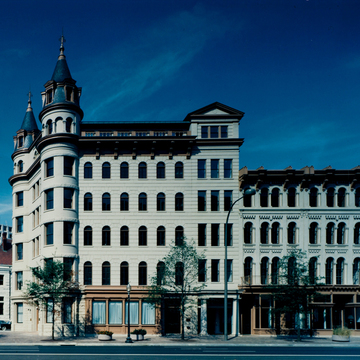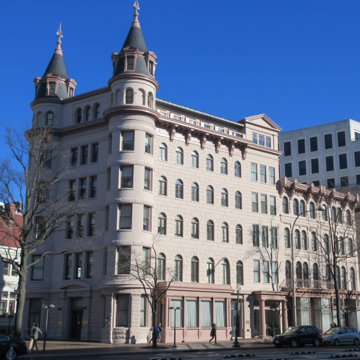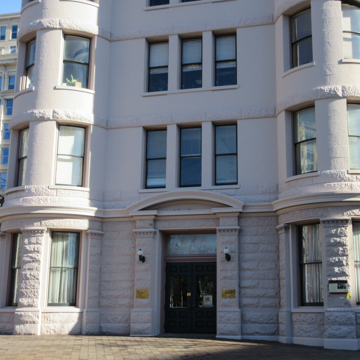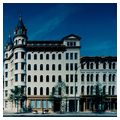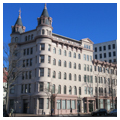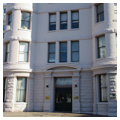The Apex Building is one of the most prominent structures along Pennsylvania Avenue. Its twin towers frame the left side of the view of the Capitol, looking east from the Treasury Department building. The building is a result of several accretions over a period of time. The original core was the Saint Marc Hotel, framed in masonry and cast iron and dating from the mid-1860s and a characteristic example of earlier fireproof construction in the city. The rusticated stone facade is punctured at even intervals with round-arch windows, which are longest on the lower floors. In 1887, when the Central National Bank converted the hotel to office use, Alfred B. Mullett was hired to design the picturesque twin towers on the west elevation, each crowned with a conical roof and decorative finials.
As part of the rejuvenation of Pennsylvania Avenue, Sears World Headquarters expanded the building in the mid-1980s by adding a sixth floor to the original hotel structure. A new connection was constructed to the small Italianate commercial buildings to the east, one formerly housing Matthew B. Brady's studio and the other a drugstore. The connection is compatible with the original hotel building but differentiated from it with flat arch windows and a distinctive gable roof.

